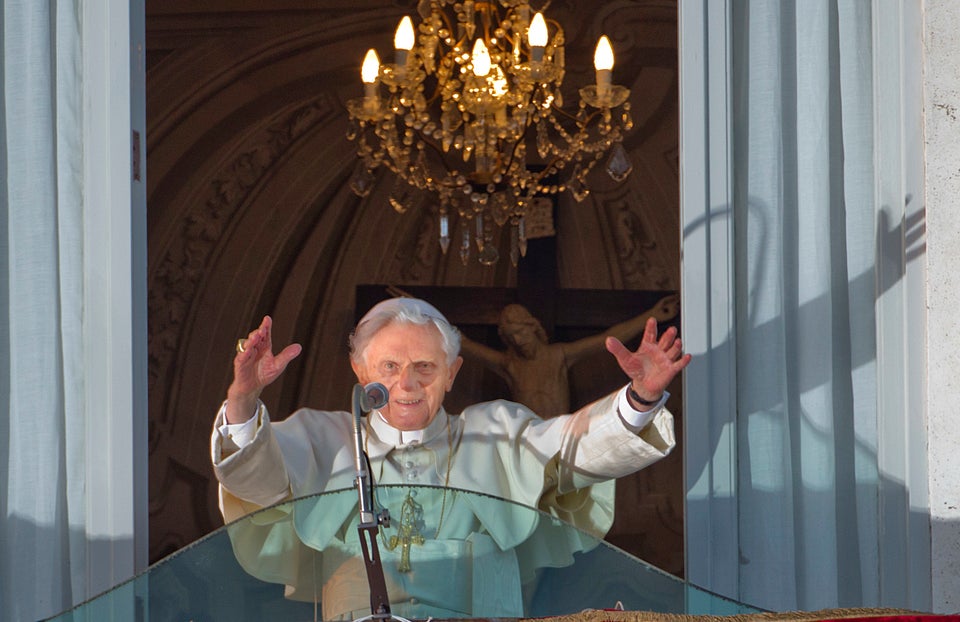As of 8 p.m. in Italy -- 2 p.m. on the U.S. East Coast and not long after landing via helicopter at his retreat at Castel Gandolfo -- Pope Benedict XVI became the "pope emeritus" and the Roman Catholic Church enters the sede vacante, the period between papacies.
The rare and relatively short time -- it only lasted 17 days after Pope John Paul II died and is expected to be even shorter after Benedict's retirement, since there's no death to mourn -- leaves many levels of the complex Vatican government temporarily dissolved until a new pope is selected in a closed-door election called the papal conclave.
During this period, it's up to the College of Cardinals, plus a few additional Vatican officials, to keep the heart of the church running.
The "Universi Dominici Gregis," a set of guidelines released in 1996 by John Paul, says the Vatican offices that remain active during the sede vacante include the vicar of Rome, who oversees everyday matters the local Roman church and the Major Penitentiary, who deals with what are called "matters of mercy," such as confessions, absolutions and dispensations. The camerlengo (Tarcisio Bertone, also the pope's deputy until he officially steps down) and an office called the Apostolic Chamber are left to oversee the state's finances and property, with an auditor general and a vice camerlengo assisting.
On Friday, the first official day of the sede vacante, Angelo Sodano, an Italian who is the College of Cardinals' dean, will formally invite cardinals to Rome to start their post-pope meetings. Most or all will already be in the city, from the former pope's last meeting with them. The general congregations, a series of daily meetings that are a mix church business as well as chances to get to know and learn about each other (and scope out the potential next pope), are expected to start Monday.
At the general congregations, of which there were 13 after John Paul's death, cardinals will decide when the conclave, the closed-door, ultra-secret series of votes to pick the next pope, will begin. Typically, conclaves are supposed to happen at least 15 days and no more than 20 days after the sede vacante begins, but Benedict changed the rules in the last days of his papacy to allow an earlier start.
When not in the conclave in the Sistine Chapel, cardinals will stay closely guarded in a the Domus Sanctae Marthae (Casa Santa Marta), a Vatican residence. They are banned from contact outside the conclave, including the use of cell phones, social media and the Internet. Only cardinals who are under 80 years old are eligible to participate in the conclave and vote. That leaves 117 cardinals, with 115 voting. (A top British cardinal has said he won't attend the conclave because of a scandal surrounding allegations of unspecific "inappropriate" behavior he is accused of conducting with priests, while an Indonesian cardinal is not attending because of weak eyesight and declining health.)
The conclave can last several days and include up to four votes each day. Ballots are burned and smoke rises from the Sistine Chapel twice daily, with black smoke meaning cardinals have failed to agree on the new pope and white smoke indicating that they've picked their new leader. To win the election, a cardinal must receive at least two-thirds the votes of his peers, plus one additional vote.

